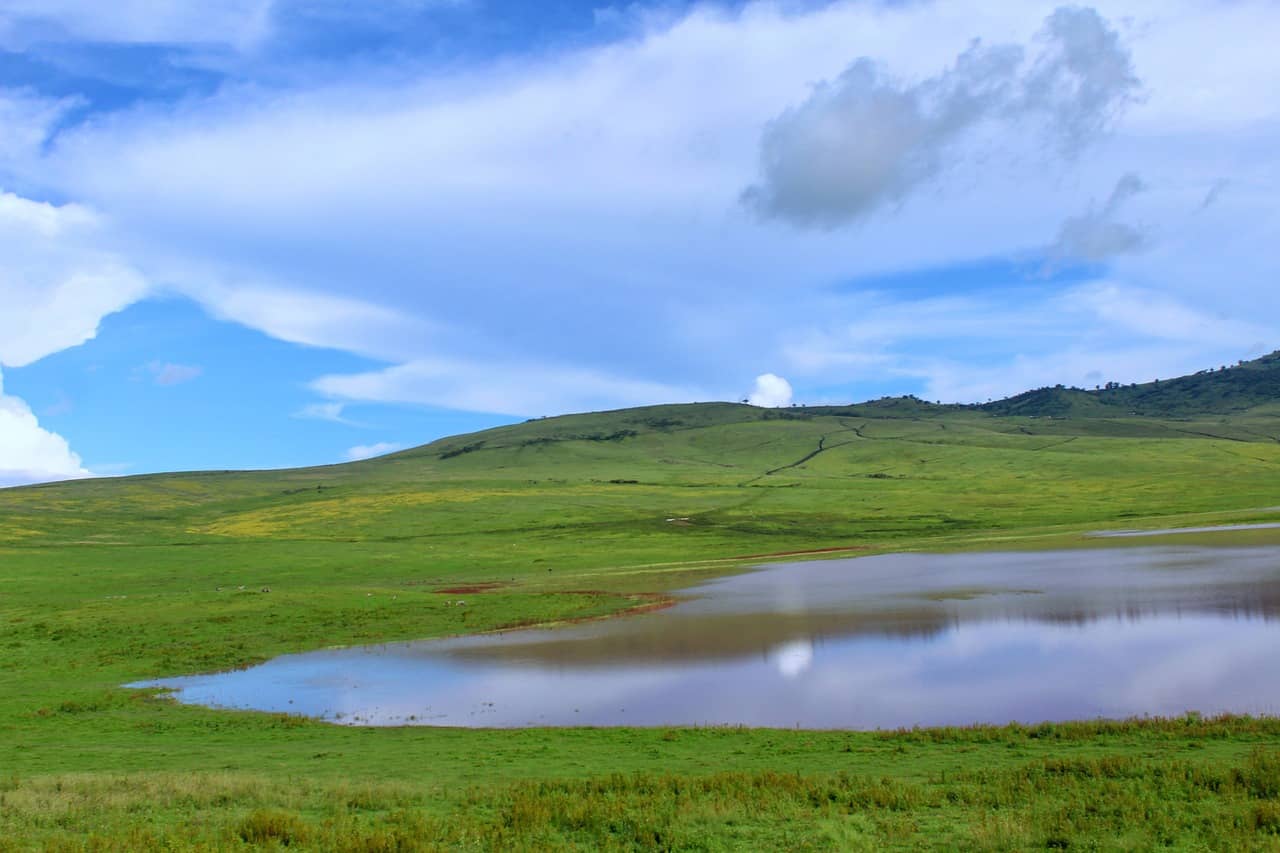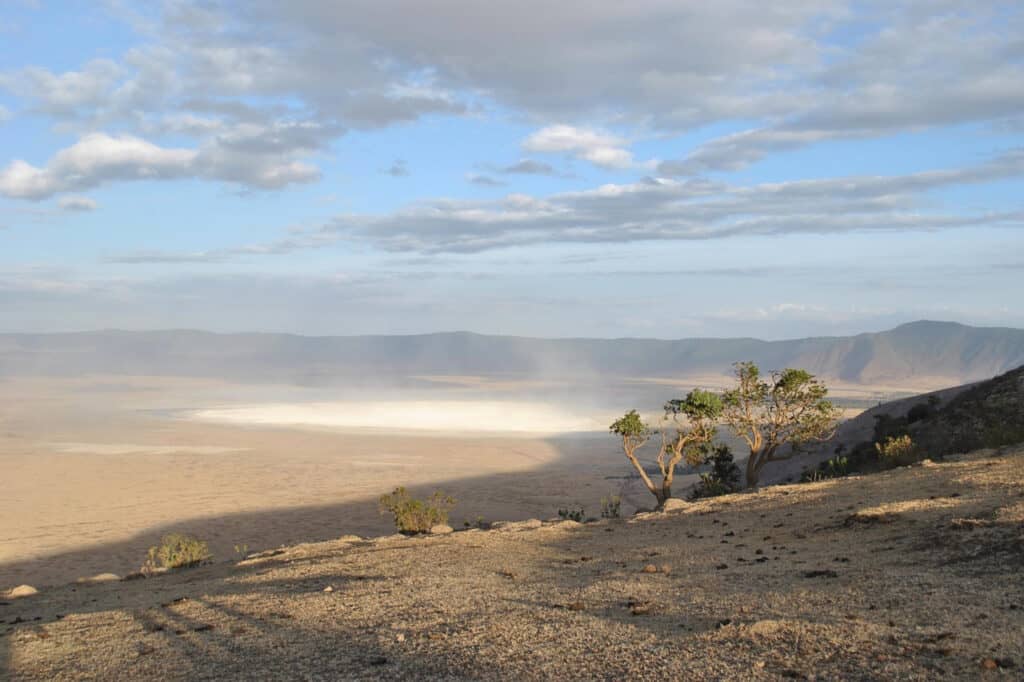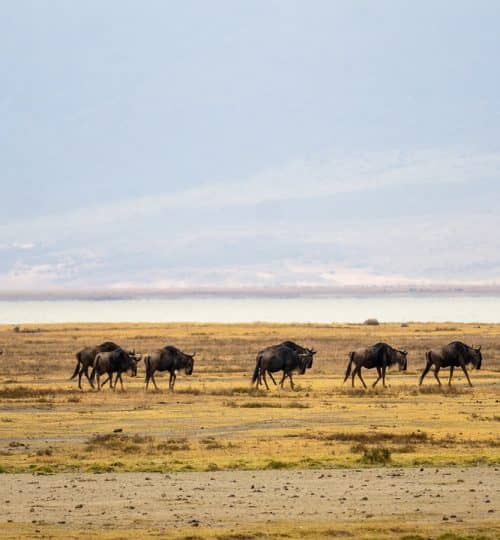Tanzania Destinations
Adventure
Ngorongoro Crater
The enormous areas of highland plains, savanna, savanna woods, and forests make up the Ngorongoro Conservation Area. It features the magnificent Ngorongoro Crater, the biggest crater in the world, and was established in 1959 as a diverse land use region where wildlife coexists with semi-nomadic Maasai pastoralists who practice traditional cattle grazing. Due to the presence of globally endangered species, the abundance of wildlife in the area, and the yearly migration of wildebeest, zebra, gazelles, and other animals onto the northern plains, the property is significant for the protection of biodiversity on a global scale. A significant body of evidence for the evolution of humans and the dynamics of the human-environment relationship has also been uncovered by extensive archaeological investigation, including 3.6 million-year-old hominid footprints. Countless species of animals, including Grant’s and Thomson’s gazelles, wildebeest, zebra, and sizable herds of buffalo, can be found in the Ngorongoro Conservation Area. Around 25,000 large game animals reside in the Ngorongoro Crater alone, huddled together in the caldera’s natural confines. The crater is the ideal location in Tanzania to see the Big Five because of the abundance of wildlife there. Additionally, it is home to the sole remaining population of black rhinoceroses in the nation, as well as some of the biggest tusker elephants on the African continent. The winter dry season lasts from June to August, and the summer wet season lasts from November to April in the Ngorongoro Conservation Area. There is never a poor time to travel because every season has its own distinct mix of benefits and drawbacks. Plan your trip for the dry season for the most pleasant weather and the best chance to see wildlife. While summer also produces astonishing numbers of rare migrant birds, you must travel between December and March to see the Great Migration. Although it may rain between November and April, there are fewer tourists and rates are lower. When the water levels are high, there are more flamingos on the soda lakes in the area.


Adventure
Serengeti National Park
Numerous creatures can be heard inside the Serengeti’s boundaries: Elephants plod across well-traveled safari routes, and hippos splash at drinking holes as hyenas snort. In addition, more than 2,000 lions are constantly ready to pounce on unwary prey and pursue their unfortunate prey across the seemingly endless waves of golden grass. The loping giraffes’ quick movements rustle the landscape, and every monkey’s motion sways the branches of the trees. The Great Migration, however, is the most incredible sight you’ll ever see. More than a million wildebeest, zebras, and gazelles travel across the Serengeti in search of greener pastures, drowning White’s paradise in a sea of animals. The park is traditionally split into three separate geographic areas. The biggest of these is the southern Serengeti plains, a famous and generally treeless savannah region that serves as a breeding habitat for wildebeest and antelope that assemble here from December to May before starting their trek north. The Grumeti River and its surrounding woodlands are part of the Western Corridor. From May to July, when the wildebeest migration comes through, visitors swarm to this region of the park, but it’s also an excellent place to see water birds and other aquatic species all year long. Last but not least, the wild northern Serengeti forests are the greatest area to see elephants and giraffes as well as the spectacular Mara River crossings of the migration.


Mountain Climbing
Mount Kilimanjaro
Mount Kilimanjaro is a mountain that may be found in Tanzania, an East African country, near to its northern border with Kenya. The mountain is located roughly 300 kilometers south of the Equator, 160 kilometers east of the East African Rift System, 225 kilometers south of Nairobi, the capital city of Kenya, and 280 kilometers from the Indian Ocean. It is a component of Tanzania’s Kilimanjaro National Park. Mount Kilimanjaro, an inactive stratovolcano that rises to a height of 5,895 meters above sea level, is regarded as the tallest peak on the African continent and the highest free-standing mountain in the world. At 5,895 meters above sea level and 4,900 meters above the plateau’s base, Mount Kilimanjaro is the highest mountain in Africa.


Wildlife
Arusha National Park
You don’t have to go far from the airport to the Arusha National Park, which is surrounded by the African wilderness. Some of the best activities in this area are canoeing, walking safaris, and game drives, which are the ideal way to begin any northern circuit safari. One of Tanzania’s most accessible parks, Arusha National Park is only a short drive between Arusha and Moshi. It’s a wonderful place for a day trip and an excellent place to start or conclude any journey to Tanzania. There are many different types of landscapes in Arusha National Park, from extensive grassland and rainforest to acacia forests and even alpine vegetation on Mount Meru’s highest peaks.


Wildlife
Lake Manyara National Park
Welcome to Lake Manyara National Park, which is renowned for its stunning beauty, lions that can climb trees, a soda ash lake that draws hordes of pink flamingos, and one of Tanzania’s largest elephant populations. This travel guide gives you the latest recent details on getting there, lodging options, Lake Manyara activities, and much more. Enjoy your Tanzanian safari! When traveling to other locations on Tanzania’s Northern Safari Circuit, such as the Ngorongoro Crater, travelers frequently stop in Lake Manyara National Park, which was established in 1960. Some visitors even choose not to stay the night in order to save money for their safari.


Wildlife
Nyerere National Park
Nyerere National Park is one of Tanzania’s largest protected wilderness areas and was given UNESCO World Heritage status for its extraordinary biodiversity and unaltered habitats. But despite this, it is blissfully undiscovered and silent. The Selous Game Reserve was the previous name for this area, but Nyerere National Park was established in 2019 in its northernmost portion, where the wide Rufiji River runs. There are several incredibly secluded safari camps in this picturesque park, ranging from traditional “thatch-and-canvas” bushcamps to star-lit treehouse retreats and one of Africa’s finest safari lodges. This magical wildlife reserve offers exquisite accommodations for both luxury and simple country living. The central section of the lazily meandering Rufiji River is flanked with baobab trees and tall Borassus palms with fan-like fronds, and it is watched over by palm-nut vultures. Low, sandy islands are home to crocodiles that are sunbathing, carmine bee-eater colonies that adorn the mud cliffs, and pairs of fish eagles that soar overhead. Herons skilfully navigate the shallows as enormous Pel’s fishing owls with ginger bars catch frogs in the water. Days spent in the park enjoying the sunshine are simply perfect. You can cruise down the lush channels while passing giraffes and elephants relaxing by the water’s edge or watch kingfishers fish and storks swooping through the shallows.


Wildlife
Mikumi National Park
Southcentral Tanzania is home to the 1,247 square mile Mikumi National Park. It is surrounded by the Uluguru Mountains to the north and the Rubeho Mountains to the east in the Morogoro region, which is part of the Selous Game Reserve. The majority of visitors to Mikumi National Park, Tanzania’s fourth-largest national park, want to view the ‘Big Five’ enormous mammals, and they won’t be dissatisfied. Visitors can observe several of these creatures in herds as they go from the lowlands that are flat to the elevated posts by the trees during the rainy season. Elephants seek out the acacia trees for their shade along the banks of the Mkata River, while giraffes may be seen eating there. Elephants, giraffes, buffaloes, zebras, elands, greater Kudu, wildebeest, roan and sable antelope, buffalo, Burchell’s zebra, sable, eland, Liechtenstein’s hartebeest, spotted hyena, and yellow baboons are among the park’s well-known inhabitants. Numerous tree-climbing lions, leopards, wild hunting dogs, and black-backed jackals are among the predators. Along the Tanzania-Zambia route, particularly in the evening or at night, lions, giraffes, and occasionally leopards are also frequently spotted. Flocks of open-billed storks and other waterbirds frequently join hippos in the two pools north of Mikumi’s main park gate. It’s an ideal location for wildlife photographers because of the stunning natural beauty and excellent lighting provided by the nearby highlands and hills. Buffalo, impala, wildebeest, and zebra can all be seen on the grassy plains.


Wildlife
Ruaha National Park
Ruaha, the “other park” on the Southern circuit, is situated right in the middle of Tanzania. Ruaha receives significantly fewer visitors than the Selous and any other comparable park in the Northern circuit due to its relative inaccessibility. A wild environment with hills covered in baobabs, rugged escarpments, and amazing animals. The largest National Park in Tanzania will astound any safari traveler. It is not difficult to understand why these enigmatic “upside-down” trees have served as the basis for innumerable such legends when one observes the baobabs strewn across the plains of Tanzania’s Ruaha National Park. The majestic scenery of Ruaha, a wild area that is arguably one of Africa’s best-kept secrets, includes numerous ancient baobabs.


